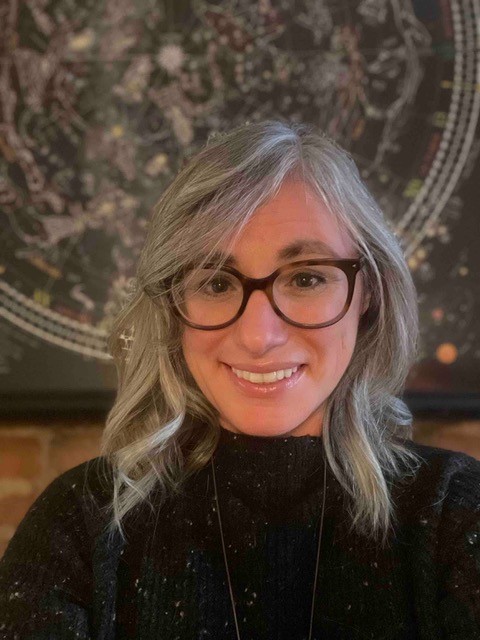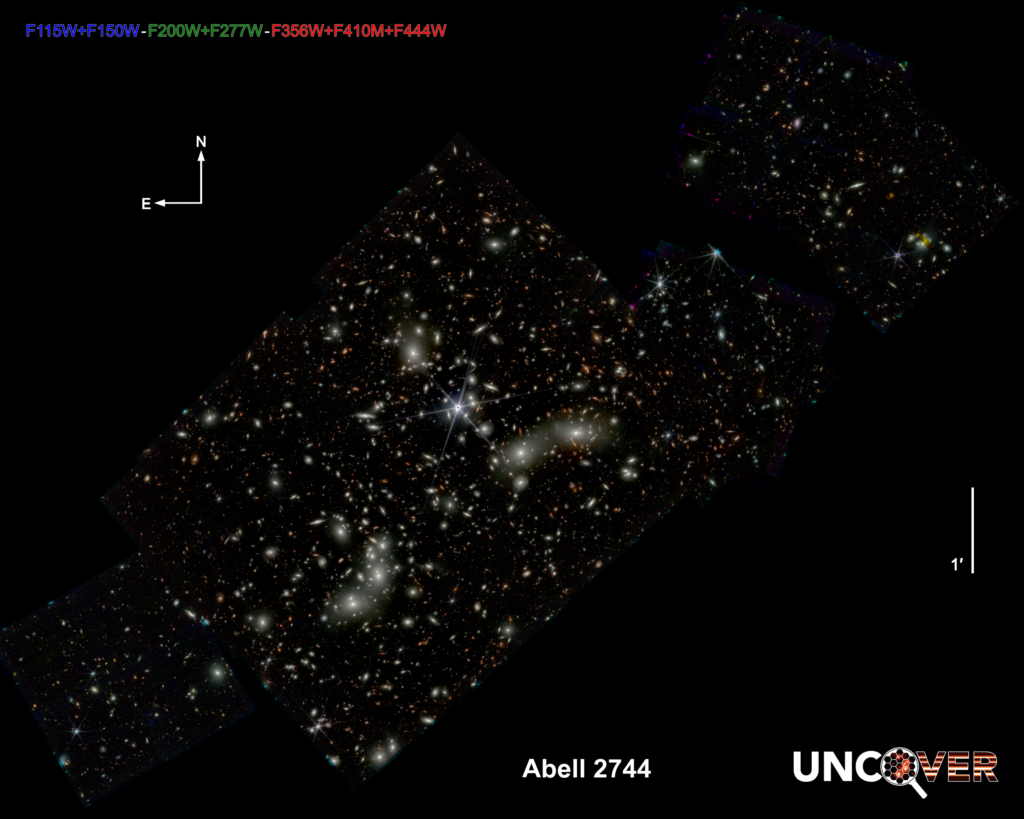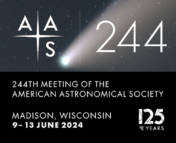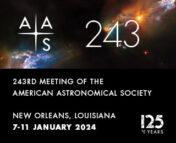In this series of posts, we sit down with a few of the keynote speakers of the 244th AAS meeting to learn more about them and their research. You can see a full schedule of their talks here, and read our other interviews here!
Looking out far into the edges of our Universe, we can essentially travel back in time to when our Universe was just forming. With new telescopes like the JWST, we can look back further than ever before, which is exactly what Dr. Bezanson, this year’s opening speaker at AAS 244, aims to do!
Dr. Rachel Bezanson is currently a professor at the University of Pittsburgh’s Department of Physics and Astronomy. Dr. Bezanson and her team, the UNCOVER JWST Project, use JWST to observe some of the galaxies and stars that formed at the beginning of our Universe.

Dr. Bezanson is this year’s Kavli Lecturer, the first presentation of the meeting, given to someone to highlight recent research of great importance. She and her team received this honor “for the remarkable diversity of ground-breaking science that has resulted from their deep imaging and spectroscopic survey of Pandora’s Cluster with JWST.”
Observing the edges of the observable universe
The UNCOVER program was designed with two main scientific goals: identifying and understanding the first galaxies and those galaxies that reionized the universe. They do this by imaging a relatively nearby (redshift z~0.3) galaxy cluster, Abell 2744. But the cluster isn’t the actual target – it’s “things in the background, so distant galaxies that lie behind the giant cluster of galaxies,” says Dr. Bezanson. Their image of the cluster can be seen in Figure 1.

The cluster itself acts as a gravitational lens, which magnifies the galaxies behind the cluster (this is also described in this Astrobite). “Because of the gravitational lensing, we get this additional boost so we can see things that are intrinsically fainter,” says Dr. Bezanson. Because the cluster is extremely massive, it is able to magnify objects behind it by two or more times.
They start by taking very high resolution images of the cluster with JWST’s NIRCam instrument. But the image is only the first part: after this initial image, the team created a catalog of objects they saw and identified 700 objects that they wanted to study further – using the capabilities of the NIRSpec instrument to take spectra of the objects. According to Dr. Bezanson, “spectroscopy is where you learn about the physics,” from object’s distances to information about their composition.
The NIRSpec instrument has very broad spectral coverage, from 600 – 5000 nanometers (nm). As we look at objects further away from us, their light appears to have longer wavelengths than it would if the same object is closer to us (redshifted), which means a sodium light bulb emitting in optical wavelengths on earth will seem to be emitting infrared light if it is moved 100 Giga-lightyears away. The broad coverage of the NIRSpec instrument means that we can study sources of optical light (like stars!) at a huge range of distances.When they took their images and spectra, they found a whole slew of interesting objects. They found two extremely high redshift galaxies at redshifts of 12.393 and 13.079, which are among some of the furthest away objects observed with JWST. They also found a supermassive black hole at the center of a galaxy, actively devouring gas from around it (called an AGN) in a fortuitous location – where it is behind the cluster, her team saw three images of it! “We’ve learned a bunch from the spectra that we took with UNCOVER,” Dr. Bezanson said.
Another interesting type of object they were able to study is a curious type of AGN, dubbed “Little Red Dots.” These are so far away that they look like a single red dot but are unlike any other AGN we know of – they’re more massive than expected, but are missing X-ray emission (see this Astrobite for more properties of these galaxies). “We don’t really understand what is the physics behind them,” says Dr. Bezanson, but the spectra she and her team took with UNCOVER are starting to shed light on these mysterious objects.
She emphasizes how her collaborators have been essential to the success of the project. Alongside her co-PI, Ivo Labbe, and many others they’ve made this survey a success. “It’s been this incredible experience because of my team,” she says.
Path into astronomy
Dr. Bezanson got her undergraduate degree at Barnard College in New York City. She knew she liked math and science and happened upon an astronomy class for non-majors, which prompted her to take more physics and astronomy. She taught labs and tutored as an undergrad. Upon graduation, she taught middle and high school physics for four years. She really enjoyed teaching but decided in her third year of teaching that she wanted to apply to grad school. She graduated with her PhD from Yale University and went on to become a Hubble Fellow at the University of Arizona and spent a year as a fellow at Princeton before becoming a professor at the University of Pittsburgh.
Her advice for undergraduates is to find mentors who support you – “if you find somebody that you think could be your advocate, try as best you can to cultivate that relationship.” When deciding if you want to go to graduate school, it’s important to not think of grad school as the default and that it’s okay to take time off and come back to it. In that case, it’s best to talk with mentors and her advice “to make sure that you lay the foundation such that you could come back.” And if you apply and don’t get in, don’t take it personally.
“Part of the reason I was so successful in graduate school was because I came in knowing I wanted to go to graduate school” and treated it like a job, she says. Graduate school can be long and, at times, frustrating, so for her, the time between undergrad and grad school proved to be immensely valuable. Her time away helped her in “taking stock of priorities and helping to get through the drudgery of graduate school.”
To hear more about studying the edges of our observable universe, tune into Dr. Bezanson’s Plenary Lecture at 8:00 AM CT on Monday, June 10th at #AAS244!
Edited by: Sowkhya Shanbhog
Featured Image Credit: AAS



